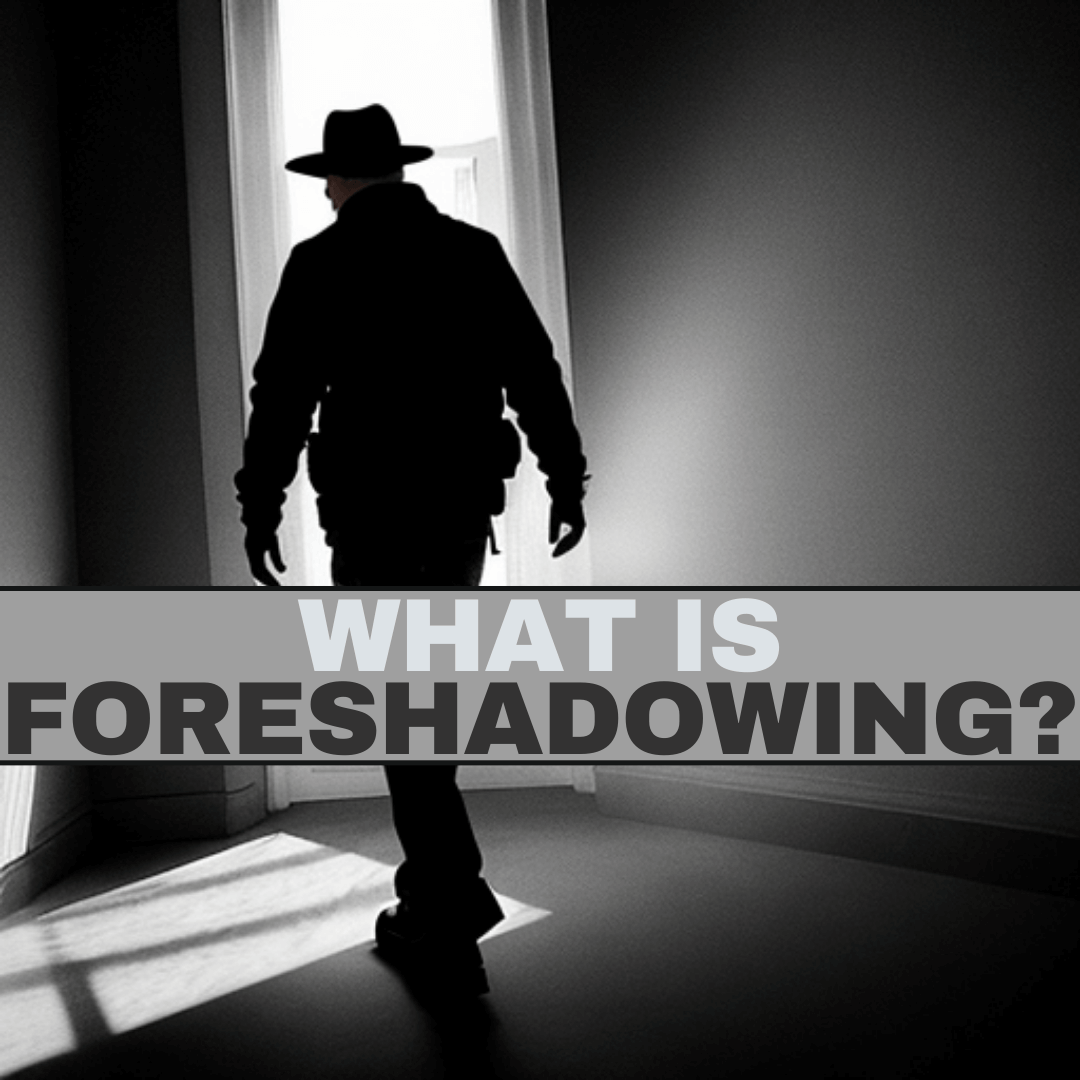Your cart is currently empty!
Understanding Foreshadowing

Imagine: you’re absorbed in a thrilling novel, living each moment with the characters, sharing their laughter and tears. The story progresses, leading to subtle hints of future events. The tension builds as you anticipate what’s going to happen next.
You’ve encountered foreshadowing, a technique where the narrative’s shadows hint at the future. But what is foreshadowing exactly, and why is it significant in a story? Travel with us, The Reliable Narrator, as we uncover the essence of the foreshadowing meaning and its purpose in literature.
What is Foreshadowing: Definition and Overview
In the simplest terms, foreshadowing is a literary device that hints at future events in a story. It’s an essential tool to create suspense, develop character, and craft a riveting plot that keeps the audience guessing.
The Concept of Foreshadowing
Foreshadowing is a play of ‘light and shadow’ in storytelling, where the author leaves hints or ‘shadows’ of future events being cast ahead of time, hinting at potential outcomes in the narrative.
Examples in Literature and Film
Let’s delve into some examples of foreshadowing to understand it better.
In the classic short story, “A Good Man is Hard to Find” by Flannery O’Connor, the grandmother’s dress, designed to be identified as a lady in case of an accident, foreshadows her eventual confrontation with The Misfit.
In film, consider “Jaws.” When the three men leave the harbor, there is a shot of their boat framed by a jaw of shark teeth. Cinema buffs who know how this film ends will see how this cinematic tool hints at the outcome of the movie.
This concept is also present in Ambrose Bierce’s “An Occurrence at Owl Creek Bridge.” The ticking watch at the beginning of the story foreshadows the importance of time and the impending demise of the protagonist, Peyton Farquhar.
Types of Foreshadowing
Foreshadowing can take various forms in literature, each with its unique effects. Here are a few types:
Direct Foreshadowing
This involves directly hinting at upcoming events, as seen in J.K. Rowling’s “Harry Potter and the Sorcerer’s Stone.”
Indirect Foreshadowing
Here, the clues are more subtle and may require interpretation, as in F. Scott Fitzgerald’s “The Great Gatsby.”
Symbolic Foreshadowing
This form uses symbols or metaphors to hint at future events, such as the three witches in William Shakespeare’s “Macbeth.”
Red Herring
This deceptive technique provides misleading clues, creating unexpected twists, a method often used in Agatha Christie and other detective novels.
Prophecy
A specific type of foreshadowing where a prophecy or prediction made within the narrative foreshadows the future, seen in George R.R. Martin’s “A Song of Ice and Fire” series.
Chekhov’s Gun
Named after Russian playwright Anton Chekhov, this principle suggests that every narrative element should be necessary and irreplaceable.
Significance in Literature
Foreshadowing’s role in literature is paramount. It’s the pulse that keeps the audience’s hearts racing, a glimpse of the future that maintains suspense. It gives depth to the narrative, enriches characters, and guides the plot in an engaging manner. These elements help create an enthralling narrative, reinforce key themes, and deliver an engaging and surprising story.

Frequently Asked Questions
To further examine the idea of foreshadowing, we’ve created a list of frequently asked questions:
What is foreshadowing in literature?
Foreshadowing is a literary device that hints at future events in a story, creating suspense and contributing to a well-structured plot.
How is foreshadowing used?
Foreshadowing is used by authors to subtly hint at future events in the story, which helps to create suspense and intrigue, and to shape the narrative.
Can a story exist without foreshadowing?
Yes, but foreshadowing enhances the plot by creating suspense and providing clues that make the story more engaging.
Is foreshadowing used in all forms of literature?
While prevalent in many narratives, not all stories use foreshadowing. Its use depends on the author’s style and the story’s needs.
What’s the difference between foreshadowing and flashback?
While foreshadowing hints at future events in a story, a flashback is a narrative technique that takes the reader back to past events.
How can I teach foreshadowing?
Foreshadowing can be taught by reading and discussing texts that use the device, and having students create their own examples.
Can foreshadowing be misleading?
Yes, in a technique called ‘red herring,’ an author may deliberately mislead readers, providing clues that point to an incorrect conclusion.
Reliable Thoughts
Diving deep into the world of foreshadowing enriches our understanding of the art of storytelling. This vital literary device helps us appreciate the nuances of well-crafted narratives, tying themes together, and providing a more engaging read.
Have a burning question about foreshadowing we didn’t address? Or perhaps a favorite example you’d love to share? Leave a comment below and explore more fascinating content with The Reliable Narrator.
by
Tags:

Leave a Reply